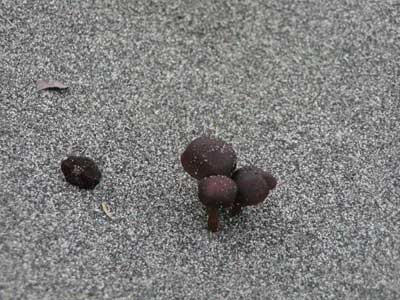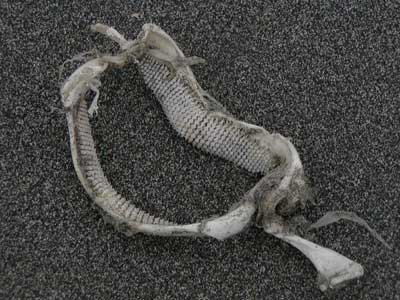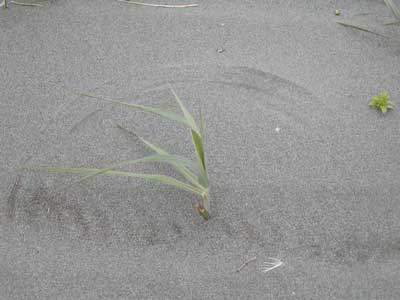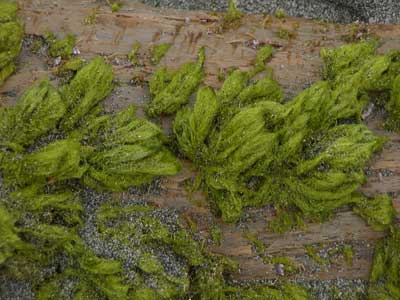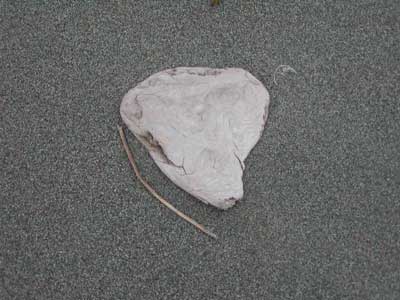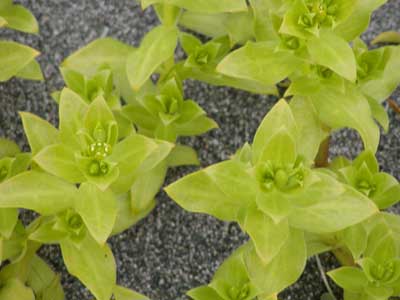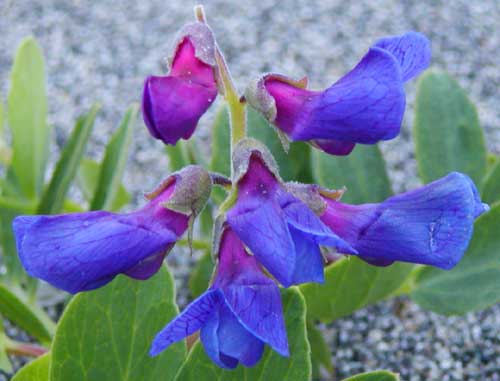 



[ WARNING: Some photographs in this post are potentially not for the squeamish. ] Yesterday I found out that I have acquired a couple of new readers, and so I went back and looked over recent posts. They've been somewhat dark or down by my normal standards as of late. Granted, some bad stuff's happened lately, but on the whole I'm still happyjacq and it's about time I did a happy post. This morning at work was fun, so I thought I'd share. A couple of days ago, I received a phone call from a sea lion biologist with the Alaska Department of Fish and Game. She was looking for a coworker of mine who was in the backcountry, so I inquired if I might help; she elaborated that she needed someone to check out a report of a dead sea lion. You may have read an essay from last year in which I went and checked on a dead whale for the National Marine Fisheries Service. I like assisting other agencies with things like this - they need the help, it's hard to find people willing to do this stuff, I have very little sense of smell and a very strong stomach and a fascination with biology, the other agency pays for my gear and my flights, my employer supports me helping other agencies because it broadens my experiences and fosters good relations with another agency who generally will return the favor at some point, and I get to do things very few people are ever legally allowed to do. So I told the sea lion biologist I'd be willing to help if she couldn't find anyone, and that even if she did, I'd love to go along and help.
My friend Bill (a biologist with the Yakutat Salmon Enhancement Board) and I departed Yakutat at 7:30 this morning in a Cessna 185 and flew to a river estuary about twenty minutes southeast of Yakutat, where we were dropped off with our gear. It was rather cloudy, but the mountains were visible beneath the clouds in the distance. We unloaded our gear from the plane and started hiking up over the dune to the carcass. Our pilot started up the engine, and we were quite shocked to see a very large fireball pop out of the exhaust. I'd never seen that happen before, and quite frankly am so out of practice with my piloting that I'd forgotten that it could happen and what to do if it happened (worry not, folks, I haven't got a license yet and will have to review a great deal before I get one), but of course my friend Les was all in control. We were waving to him to make sure he knew about the flames, while he waved us off and took care of the problem. He put the flames out with the prop and took off for Yakutat. We all had a good chuckle on this later this afternoon after he picked us up ("I know to passengers it's pretty freaky to watch, but I knew as soon as I started it up rich like that I might get some flames... you have to keep cranking the engine to make the prop wash put it out or you really will get a fire," he told us), but at the time it was pretty damn scary. So we watched the plane take off without exploding (hooray) and headed over the sandy ridge to the carcass. And this is what we saw: 
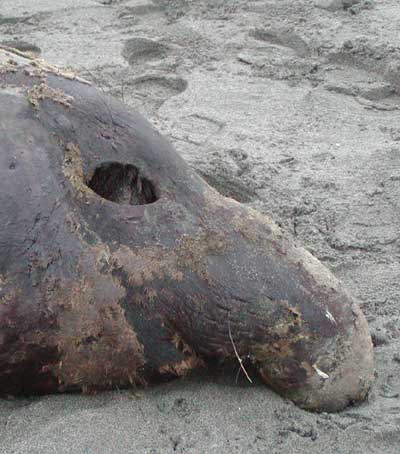 So the very first thing that jumped out at us was that this was not a sea lion. The long trunk-like nose leads us to believe it's probably an elephant seal... a much larger marine mammal (this is a male, and they can weigh up to two tons, or just under two thousand kilograms. The odd bit is that they aren't terribly common around here - it was the first one either of us had seen in the wild - but we had heard of incidental sightings. I've since read the Alaska SeaLife Center's website and found that males elephant seals sometimes migrate to this area. So the scientists probably won't be as excited or intrigued as we were. We had a quick discussion on what to do. After all, we'd been sent here by a sea lion biologist, and Bill wasn't sure she'd want the samples. But I figured we'd gone to all this expense and surely someone would be interested, if not ADF&G then the NMFS. And what's more, we were stuck on the beach for a few hours regardless. Bill agreed and we set to work. It was a massive animal, most assuredly full grown, and didn't seem to have any perimortem trauma. They'll probably run toxicology tests on the blubber, which may tell them something, but we couldn't see anything that would help us speculate as to cause of death. ADF&G had allowed me to purchase materials on their account, and so the previous day I'd gone to procure garbage bags, zip locks, and cutting implements. After the horrible baked whale I'd dealt with last year, I decided to come prepared. I purchased a meat saw - basically a hack saw designed to cut through bone. I was all proud of this until Bill showed up with a chain saw. He too had learned from the cooked in the sun whale hide of the previous June and had done another whale later that summer and had used the chain saw; while messy as hell it had also worked. But as it turned out, today's animal was very easy to cut and we never used more than a six inch butcher knife. We made pretty quick work of the animal and collected everything the biologist wanted: the skull, the whiskers, an uncontaminated blubber sample and three muscle samples from various locations.
After bagging and labeling all of our samples and cleaning up, we were done. Both of us had conveniently forgotten our watch ("Well, I guess if we notice a sunset we'll know our pick-up is late..."), but we were fairly certain that it was still early. Fieldwork in Alaska is like that, when you're working in remote locations at the mercy of small planes. You make sure to schedule plenty of time to make certain that you finish, because the expense of second plane flight far outweighs the cost of your salary more often than not. Sometimes you can't get an earlier pick up due to the air taxi's schedule. And sometimes things go easier than you anticipated and you have time to spare. I've had as much as three days to spare before, so having two or three hours is really nothing.
All was not lost, however! For I took many other nice photographs, and that's even better than a pretty dark green hand-blown historic glass fishing float that wandered to Alaska all the way across the vast Pacific ocean from the distant Orient because I can share the photos with you. (I'm not bitter about not finding any floats, seriously.)
I also passed numerous wolf, eagle, and brown bear tracks, but they're notoriously difficult to photograph, I'm afraid. I had a nice, early lunch with Bill, to whom I gave half my sandwich because it wasn't entirely good for me, and we sat and discussed so many things I didn't really want to think about while looking out at the sea, like the state of the world and how people are fine in small groups but how on an industrial scale we've quite possibly destroyed this planet (I hope Bill is wrong, but I'm not sure he is). And there's so much I'm leaving out... our hilarious VHF radio conversation with Hippy John, the other planes that flew over us and tipped their wings in greeting as they passed, the blush in my cheeks from the wind, the half-dozen eagles that flew away from the seal as our plane approached and how for a short time they flew along side us, keeping pace with long, graceful strokes... but this entry is long enough and I'm ready to relax for the evening.
|

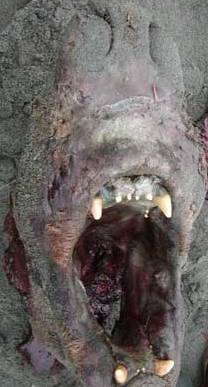

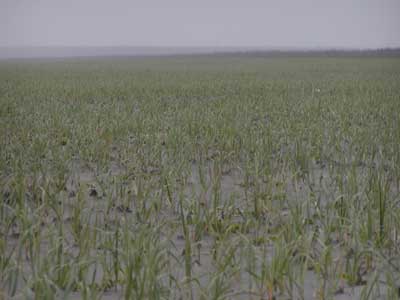 The fog rolled in on us, and it even rained for a short while.
This is the beach grass extending to the northwest. The fog makes it look almost
desolate, despite the green, but if you look closely, there are many wondrous things.
The fog rolled in on us, and it even rained for a short while.
This is the beach grass extending to the northwest. The fog makes it look almost
desolate, despite the green, but if you look closely, there are many wondrous things.

